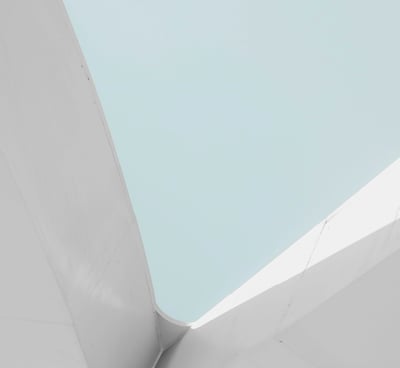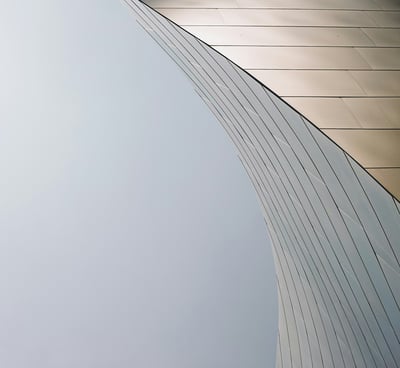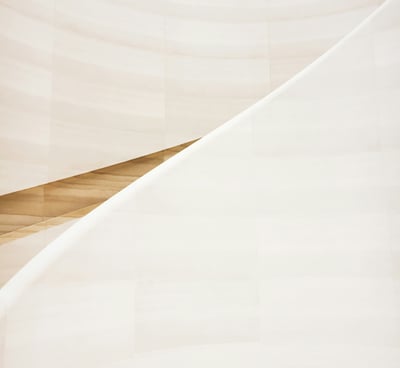Healthy living starts with the right choices
Why Linen Is the New Craze:
The Versatile Fabric That Transcends Cottage, Minimalist, Vintage, Capsule, and Boho Fashion Trends
Angie Z.
4/12/202513 min read


Linen has swept through the fashion world, becoming a top choice for style-conscious consumers seeking both comfort and versatility. This natural fabric brings a timeless quality to wardrobes while adapting seamlessly to multiple aesthetic preferences from cottage core to minimalist designs.
Linen's unique ability to transcend fashion trends makes it a worthwhile investment for any wardrobe. The fabric maintains its classic appeal through changing seasons and shifting style preferences. Its natural texture and breathable properties create clothing that serves practical needs while matching various style sensibilities.
Linen blends enhance this adaptability, offering the classic look of pure linen with added durability or stretch. These combinations make linen appropriate for both casual beach days and more structured office environments. The fabric's natural variations in texture create visual interest that suits diverse fashion approaches from boho to capsule wardrobes.
Exploring the Linen Craze
Linen has burst onto the fashion scene with remarkable staying power. This ancient fabric has captured the attention of designers and consumers alike, bridging multiple style aesthetics while promising sustainability.
Historical Resurgence
Linen's story begins thousands of years ago in ancient Egypt, where it was used for mummification and considered a symbol of purity. The fabric experienced cycles of popularity throughout history, serving royalty and common folk alike.
In the 1920s and 1930s, linen became associated with leisure and luxury travel. Wealthy Americans and Europeans wore linen suits and dresses while vacationing on the French Riviera.
The 1990s saw another linen revival as part of the natural fiber movement. Designers like Calvin Klein and Donna Karan incorporated the material into their collections, appreciating its raw, organic texture.
Today's resurgence connects to these historical roots while adding modern sensibilities. Vintage linen pieces from previous decades are now highly sought after by collectors and fashion enthusiasts.
Linen's Modern Appeal
Linen's current popularity stems from several key factors. First, its sustainability credentials are impressive. The flax plant requires minimal water and pesticides to grow, making it environmentally responsible.
The fabric's natural temperature regulation keeps wearers cool in summer and surprisingly warm in winter. This versatility makes linen practical for year-round wardrobes.
Consumer Priorities Driving Linen Popularity:
Sustainability concerns
Desire for natural materials
Emphasis on comfort
Appreciation for craftsmanship
Interest in timeless styles
Social media has amplified linen's appeal. Instagram and Pinterest showcase its photogenic qualities—the casual wrinkles, the way it catches light, and how it ages beautifully over time.
Many consumers now prioritize buying fewer, better pieces. Linen's durability makes it a perfect candidate for this "quality over quantity" approach.
Crossover Into Mainstream Fashion
Linen has transcended its former niche status to become a staple in mainstream fashion. Major retailers like Zara, H&M, and Uniqlo now offer extensive linen collections each spring and summer.
The fabric's adaptability has helped it cross style boundaries. Pure linen pieces satisfy minimalist aesthetics, while linen blends work for more structured, contemporary looks.
Designers appreciate linen's ability to take dye well. This has led to vibrant color options beyond traditional neutrals, expanding its appeal to younger consumers.
Men's fashion has embraced linen particularly strongly. Linen shirts and pants have become summer essentials, replacing more formal options in many workplaces.
The price range for linen has also expanded dramatically. While premium European linen remains an investment, more affordable options have made the material accessible to wider audiences.
Linen's Versatility in Style
Linen fabric crosses fashion boundaries with ease, adapting to multiple style preferences while maintaining its signature texture and comfort. Its natural characteristics make it an ideal choice for various aesthetic directions.
Cottage Core Charm
Linen embodies the cottage core aesthetic perfectly with its rustic texture and natural appeal. Flowy linen dresses with puffed sleeves and gathered waists capture the romantic countryside vibe that cottage core celebrates.
Natural, undyed linen in cream and oatmeal tones pairs beautifully with wildflower prints and delicate embroidery details. These combinations evoke a nostalgic, handcrafted quality.
Linen aprons, pinafore dresses, and button-up blouses with Peter Pan collars all showcase how this fabric supports the cottage core look's connection to simplicity and nature.
Many cottage core enthusiasts appreciate linen's historical significance in traditional homemaking, adding authenticity to this style movement.
Minimalist Elegance
In minimalist fashion, linen shines through its clean lines and understated beauty. The fabric's natural drape creates effortless silhouettes that require little embellishment.
Monochromatic linen pieces in neutral tones like ivory, taupe, charcoal, and navy form the backbone of minimalist wardrobes. These items mix and match with ease.
Minimalist linen essentials offer the perfect balance of ease and elegance. Tailored wide-leg pants provide structure while maintaining a natural, flowing silhouette. Boxy, oversized shirts deliver a relaxed yet intentional look, ideal for effortless layering. Simple shift dresses stand out for their versatility and timeless appeal, while unstructured blazers add a touch of polish—professional without the fuss. Together, these pieces create a refined, breathable wardrobe grounded in simplicity and style.
The slight texture of linen adds visual interest to minimalist outfits without breaking their clean aesthetic. Its natural wrinkles actually enhance the lived-in, authentic appeal valued in minimalism.
Vintage Revival
Linen has featured prominently in fashion throughout history, making it perfect for vintage-inspired looks. High-waisted linen trousers capture 1940s elegance, while linen midi skirts evoke 1970s bohemian style.
The fabric's ability to hold structure while maintaining softness works perfectly for recreating vintage silhouettes. Button-front linen dresses with cinched waists recall 1950s housedresses with modern comfort.
Designers often combine linen with vintage-inspired details like:
Mother-of-pearl buttons
Hand-stitched details
Scalloped edges
Contrast piping
Vintage linen garments themselves remain collectible and wearable decades after production. This longevity demonstrates both the quality of the material and the timelessness of well-designed linen pieces.






Capsule Wardrobe Essentials
Linen excels in capsule wardrobes due to its durability and versatility across seasons. Core linen pieces serve as reliable foundations that work year after year.
A well-chosen linen blazer transitions seamlessly from professional settings to casual outings. Similarly, linen trousers pair with everything from silk blouses to simple t-shirts.
The fabric's breathability makes it useful in layering—lightweight linen shirts under sweaters add comfort without bulk. In warmer months, those same shirts stand alone as stylish staples.
Linen in neutral colors maximizes mix-and-match potential. However, even colorful linen pieces tend to have a muted, sophisticated quality that integrates well with other items.
Smart capsule wardrobes include linen pieces that can be dressed up or down, like a simple linen dress that works for both beach days and dinner events






Bohemian Rhapsody
The boho aesthetic embraces linen's natural texture and organic feel. Flowy linen maxi dresses and oversized tunics capture the free-spirited essence of bohemian style.
Linen's ability to take dye well means it appears in the earthy color palette boho style favors—terracotta, mustard, olive, and indigo. These colors often come from natural dyes, enhancing the eco-friendly aspect.
Boho fashion loves linen for its tactile qualities. The slightly rough texture contrasts beautifully with other bohemian elements:
Delicate embroidery
Wooden beads and buttons
Macramé details
Fringe and tassels
Crinkled linen, particularly in looser silhouettes, embodies the carefree boho approach to dressing. The natural wrinkles become part of the charm rather than something to fix.
Many artisanal fashion brands focus on hand-loomed linen with visible texture variations, celebrating the imperfections that make each garment unique.






Linen and Linen Blends
Linen blends combine the natural beauty of pure linen with other fibers to create fabrics that maintain linen's appeal while addressing some of its challenges. These innovative textiles bring versatility to modern wardrobes through improved characteristics and varied textures.
Defining Linen Blends
Linen blends are fabrics that mix linen fibers with other natural or synthetic materials. Common combinations include linen-cotton, linen-rayon, linen-silk, and linen-polyester. The ratio typically ranges from 55% linen with 45% of another fiber to the reverse proportion.
These blends are created during the yarn-making process, where fibers are combined before being woven into fabric. This integration produces textiles that capture linen's natural texture while incorporating beneficial properties from the companion fibers.
The resulting fabrics maintain the distinctive linen look while reducing some of pure linen's limitations. Manufacturers can adjust blend percentages to highlight specific characteristics for different clothing applications.
Advantages Over Pure Linen
Linen blends offer practical improvements over 100% linen fabrics. The most notable benefit is reduced wrinkling, as complementary fibers help the fabric maintain its shape throughout wear.
Blends also provide enhanced durability. While pure linen is naturally strong, certain fibers like polyester can extend the fabric's lifespan and improve resistance to wear patterns at stress points.
Cost effectiveness represents another advantage. Blending linen with less expensive fibers creates more affordable options that retain linen's aesthetic appeal.
Care requirements become simpler with blends. Many linen-blend garments can be machine washed and dried without special handling, unlike pure linen which often requires careful treatment.
These fabrics often feel softer against the skin initially, without requiring multiple washes to achieve comfort.
Popular Linen Blend Fabrics
Linen-Cotton: This widely used blend combines linen's breathability with cotton's softness and reduced wrinkling. The typical 55% linen/45% cotton ratio works well for everyday clothing like casual shirts and summer dresses.
Linen-Rayon: This blend creates a fabric with beautiful drape and subtle sheen. Rayon adds softness while maintaining breathability, making it ideal for flowing garments like skirts and relaxed trousers.
Linen-Silk: A premium blend that pairs linen's casual texture with silk's luxurious sheen. Though more expensive, these blends create lightweight fabrics perfect for special occasion wear and elevated basics.
Linen-Polyester: This practical blend adds wrinkle resistance and durability to linen. Often used in household textiles and affordable clothing, it maintains the linen look while improving performance in daily use.
Sustainability and Durability
Linen stands out in the fashion world for its remarkable environmental benefits and impressive longevity. These qualities make it a smart choice for conscientious consumers wanting both style and sustainability.
Eco-Friendly Fashion
Linen comes from the flax plant, which requires significantly less water than cotton—about 60% less. Farmers can grow flax with minimal pesticides and fertilizers, reducing chemical runoff into ecosystems.
The production process creates almost zero waste. Every part of the flax plant serves a purpose: seeds become linseed oil, while shorter fibers transform into paper or insulation.
Linen biodegrades completely when disposed of, unlike synthetic fabrics that might take centuries to break down. This natural decomposition leaves no microplastics behind.
Carbon footprint matters too. Flax plants actually absorb CO2 from the atmosphere as they grow, making linen's environmental impact even more positive.






Linen's Longevity
Linen boasts exceptional strength—it's approximately 30% stronger than cotton. This natural durability means linen garments typically last for decades rather than seasons.
The fabric actually improves with age. Each wash softens linen while maintaining its structural integrity, creating garments that become more comfortable over time without losing shape.
Linen resists abrasion remarkably well. The fabric's natural fibers don't pill or show wear patterns as quickly as other textiles.
Its temperature regulation properties prevent excessive wear. Because linen breathes and wicks moisture, it experiences less stress from sweat and body oils that typically break down other fabrics.
Proper care extends linen's life even further. Simple maintenance like air-drying and avoiding bleach can help linen pieces remain in rotation for generations.
Fashion's Timeless Fabric
Linen has secured its place in the fashion world not just as a trending fabric, but as a lasting wardrobe essential. Its natural texture and versatility allow it to adapt to changing styles while maintaining its core qualities of breathability and durability.
Why Linen Stands the Test of Time
Linen's longevity in fashion stems from its remarkable durability. This fabric actually becomes softer and more comfortable with each wash, unlike many synthetic materials that deteriorate quickly.
Historically, linen garments have been discovered in ancient Egyptian tombs, still intact after thousands of years. This natural strength comes from the flax plant's fibers, which are significantly stronger than cotton.
Beyond durability, linen offers exceptional breathability. It absorbs moisture without holding bacteria, making it ideal for hot weather and sensitive skin.
The fabric's natural texture adds character to garments. Its slight irregularities create visual interest that mass-produced synthetic fabrics can't match.
Linen also scores high on sustainability metrics. Flax plants require minimal water and pesticides compared to cotton, making linen an environmentally responsible choice for conscious consumers.






The Future of Linen in Fashion
Fashion designers continue to innovate with linen, creating modern silhouettes that appeal to younger consumers. New processing techniques have reduced linen's tendency to wrinkle, addressing one of its few drawbacks.
Linen blends combine the best properties of multiple fibers. Linen-cotton blends offer breathability with reduced wrinkling, while linen-silk mixtures create luxurious draping with enhanced durability.
The fabric's versatility shines in its ability to cross style boundaries. From structured blazers to flowing dresses, linen adapts to various aesthetics without losing its essential character.
Fashion forecasters predict continued growth in linen's popularity. As consumers increasingly value quality over quantity, linen's long-lasting nature aligns perfectly with the shift toward sustainable, capsule wardrobes.
Caring for Linen
Proper care extends the life of linen garments while preserving their natural beauty. Taking time to learn the right maintenance routines ensures your linen pieces remain stunning season after season.
Maintenance and Storage Tips
Linen requires thoughtful storage to maintain its quality. Hang linen clothing on padded hangers to prevent shoulder distortion and creasing.
Avoid plastic bags for storage, as linen needs to breathe. Cotton garment bags provide protection while allowing air circulation.
Before storing seasonal linen items, ensure they're completely clean and dry. Even invisible stains can darken over time if left untreated.
Store linens in cool, dry places away from direct sunlight. Prolonged sun exposure can fade the natural colors and weaken fibers.
Quick tip: Place lavender sachets near stored linens to deter moths naturally.
Avoid folding along the same lines repeatedly to prevent permanent creasing. Refold items occasionally if stored long-term.
Washing Best Practices
Linen generally benefits from gentle machine washing in cold or lukewarm water. Always check garment care labels, as some linen blends have specific requirements.
Detergent choice matters. Select mild, plant-based detergents without brighteners or bleach that can damage natural fibers.
Separate light and dark linens during washing. New linen items may release excess dye during initial washes.
Avoid overloading the washing machine. Linen needs space to move freely during the washing cycle.
Drying recommendations:
Air-dry when possible
Remove from dryer while slightly damp
Iron at medium heat while still damp for best results
For stubborn stains, treat promptly with gentle stain removers designed for natural fibers. Never use chlorine bleach on linen.






Incorporating Linen Into Your Wardrobe
Adding linen pieces to your closet can refresh your style while providing comfort and versatility. These breathable garments work well in many different fashion aesthetics and can be worn year-round with the right styling techniques.
Transitioning to Linen Wear
Start small with basic linen pieces like a button-down shirt or wide-leg pants. These items pair easily with clothes you already own, making the transition smoother.
Look for natural colors first—beige, white, and soft blue—as these are easier to incorporate into existing outfits. These neutral tones work as excellent foundation pieces.
For beginners, linen blends (like linen-cotton) can be more forgiving than pure linen. They wrinkle less while still offering breathability.
Consider the seasons when building your collection. Lightweight linen is perfect for summer, while heavier linen blends work well for fall layering.
Quality matters: Invest in a few well-made pieces rather than many cheap ones. Good linen improves with washing and can last for years.
Styling Tips for Each Fashion Genre
Cottage style: Pair flowy linen dresses with straw hats and simple sandals. Look for pieces with subtle embroidery or soft gathers for a countryside feel.
Minimalist: Choose clean-lined linen shirts and trousers in monochromatic colors. Avoid excessive details and opt for simple cuts with perfect proportions.
Vintage: Seek high-waisted linen pants or button-front skirts. Add leather belts and brooch pins for authentic vintage touches.
Capsule wardrobe: Focus on versatile linen pieces like blazers, wrap dresses, and straight-leg pants that can be mixed and matched easily.
Boho: Embrace natural-dyed linens in earthy tones. Look for pieces with tassels, loose silhouettes, and layering potential.






The Future of Fabric
Linen stands at the forefront of fashion's evolution, balancing traditional craftsmanship with modern technological advances. This natural fabric continues to adapt to changing consumer demands while maintaining its core qualities of durability and sustainability.
Innovations in Linen Production
New processing techniques have transformed linen production in recent years. Enzymatic treatments now soften linen fibers without harsh chemicals, creating more comfortable garments that require less breaking-in time.
3D-weaving technology allows manufacturers to create complex linen structures with less waste. This method produces stronger fabrics while using fewer resources.
Several companies have developed water-saving techniques that reduce linen's environmental footprint by up to 70%. These processes preserve linen's natural benefits while addressing previous production inefficiencies.
Key technological breakthroughs:
Crease-resistant treatments that maintain linen's natural properties
Organic processing methods that eliminate harmful chemicals
Recycled linen blends that incorporate post-consumer waste
Anticipated Trends in Linen Fashion
Fashion forecasters predict linen will expand beyond summer wardrobes into year-round staples. Heavier linen weaves and innovative blends with wool or recycled synthetics make the fabric suitable for cooler months.
Customization will drive linen's growth in premium markets. Brands now offer made-to-measure linen pieces with personalized details, appealing to consumers seeking unique, long-lasting garments.
Digital printing on linen creates vibrant patterns while using less water than traditional dyeing methods. This technique allows for small-batch production and reduces waste.
The rising sectors for linen include:
Athleisure (performance linen blends with stretch)
Sustainable workplace attire
Gender-neutral collections featuring relaxed silhouettes
Designers continue exploring linen's versatility through unexpected applications like structured outerwear and technical accessories.











